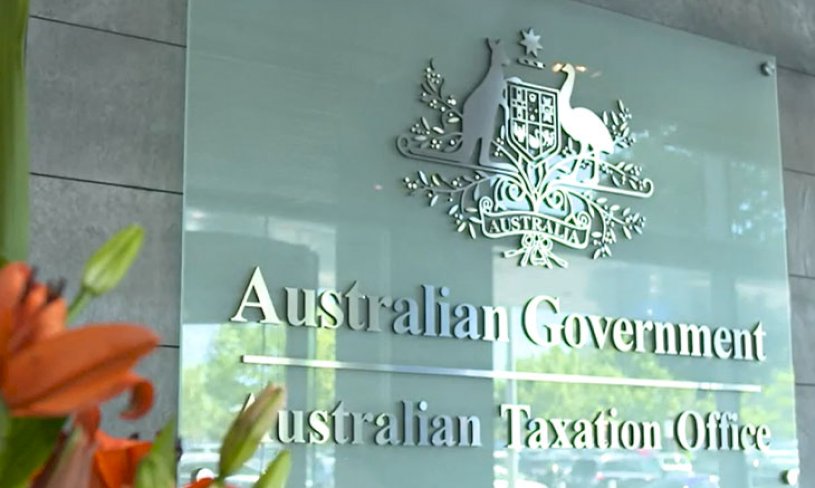There is an increasing number of SMSFs that invest in 50/50 unit trusts. That is, an SMSF has a 50 per cent interest in a unit trust, with another unitholder holding the remaining 50 per cent interest, which invariably is an unrelated SMSF.
Our experience over the years has uncovered weaknesses in how many of these have been implemented, operated or documented.
We examine below some key risks that should be considered and strategies for successfully navigating this trust structure.
Is the trust a related trust?
Where there are two unrelated SMSFs each holding 50 per cent of the units in a unit trust, this “arrangement” has generally been considered not to give rise to a related trust for in-house asset purposes under s 70E(2)(a) of the Superannuation Industry (Supervision) Act 1993 (Cth) (SISA).
However, there are several other tests that can easily give rise to a related trust relationship and related follow on consequences as discussed below.
The primary consequence of the related trust relationship is that once this relationship arises, the in-house asset rules limit each fund’s investment to no more than 5 per cent of the market value of each fund.
ATO materials regarding 50/50 unit trusts
The ATO in March 2013 confirmed in its ATO National Tax Liaison Group – Superannuation Sub Committee Minutes of 5 March 2013 (ATO NTLG Minutes) that an SMSF holding a 50 per cent interest does not, by itself, amount to control of a unit trust. These non-binding ATO comments have been relied on by many without realising that the ATO did not rule out the other tests in s 70E(2) such as s 70E(2)(b) and (c).
Section 70E(2) provides three limbs to test whether a unit trust is a related trust.
(2) For the purposes of sections 70B, 70C and 70D, an entity controls a trust if:
- a group in relation to the entity has a fixed entitlement to more than 50 per cent of the capital or income of the trust; or
- the trustee of the trust, or a majority of the trustees of the trust, is accustomed or under an obligation (whether formal or informal), or might reasonably be expected, to act in accordance with the directions, instructions or wishes of a group in relation to the entity (whether those directions, instructions or wishes are, or might reasonably be expected to be, communicated directly or through interposed companies, partnerships or trusts); or
- a group in relation to the entity is able to remove or appoint the trustee, or a majority of the trustees, of the trust.
More than 50 per cent of units
The test in s 70E(2)(a) relies on whether a group (e.g. the member and the member’s related parties) has a fixed entitlement to more than 50 per cent of the capital or income of the trust.
This requires more than a 50 per cent holding of units. Therefore, a 50 per cent or lesser holding does not give rise to a related trust relationship under s 70E(2)(a). This test is generally relatively easy to establish from the unit trust documentation and related records if all units are of the same class of units.
In reviewing a trust deed, however, you need to carefully review the provisions of each deed in detail and should not make any assumptions on what, for instance, you might expect to find in the document. As noted by the High Court in CPT Custodian Pty Ltd v Commissioner of State Revenue (2005) 224 CLR 98 at [15]:
In taking those steps, a priori assumptions as to the nature of unit trusts under the general law and principles of equity would not assist and would be apt to mislead. All depends, as Tamberlin and Hely JJ put it in Kent v SS “Maria Luisa” (No 2), upon the terms of the particular trust. The term “unit trust” is the subject of much exegesis by commentators.
However, “unit trust”, like “discretionary trust”, in the absence of an applicable statutory definition, does not have a constant, fixed normative meaning which can dictate the application to particular facts of the definition in s 3(a) of the act.
If there are different classes of units, for instance, a detailed analysis would need to be undertaken to see which unitholder may exert more influence or control.
Sufficient influence
The second test in s 70E(2)(b) that can result in a related trust relationship is what is broadly known as the “sufficient influence” test. The ATO comments on the 50/50 unit trust question in the 2013 NTLG Minutes were qualified s 70E(2)(b) stating that:
… the trustee of the trust … might reasonably be expected, to act in accordance with the directions, instructions or wishes of a group in relation to the entity …
Until recently, there has been little guidance on the sufficient influence test in s 70E(2)(b). SMSF trustees involved in 50/50 unit trusts have generally tried to minimise any “related trust” risk. Some instances that may indicate some influence might include:
- The unit trust deed provides one unitholder a discretion, power or advantage over the other unitholder.
- The constitution of the corporate trustee to the unit trust provides one director/shareholder with power or advantage over the other director/shareholder, e.g. the chair of a directors or shareholders meeting has a casting vote.
- One unitholder and/or a related entity, for example:
- is actively involved in managing and controlling the unit trust’s affairs and the other is relatively passive; or
- provides loans to the unit trust and has influence via the loan agreements or mortgage or security arrangements in relation to the unit trust.
Recent developments in case law and ATO materials now, however, provide better guidance on what is meant by sufficient influence.
The BHP Billiton Limited v FCT [2020] HCA 5 decision considered “sufficient influence” for the purposes of identifying “associates” of a company under s 318 of the Income Tax Assessment Act 1936 (Cth) (ITAA 1936). The High Court held that BHP Billiton Limited sufficiently influenced BHP Billiton Plc (and vice versa). Further, BHP Marketing AG (the group’s Swiss marketing entity owned 58 per cent by BHP Billiton Limited and 42 per cent by BHP Billiton Plc) was sufficiently influenced by BHP Billiton Plc and BHP Billiton Limited.
Similar wording is used in s 318(6)(b) of the ITAA 1936 to that in s 70E(2)(b) that relevantly provides:
(6) For the purposes of this section:
- a company is sufficiently influenced by an entity or entities if the company, or its directors, are accustomed or under an obligation (whether formal or informal), or might reasonably be expected, to act in accordance with the directions, instructions or wishes of the entity or entities (whether those directions, instructions or wishes are, or might reasonably be expected to be, communicated directly or through interposed companies, partnerships or trusts); …
The BHP decision held that for a company to be “sufficiently influenced” by another entity under s 318(6)(b), it was not necessary to show “effective control” or a causal link between the entity’s “directions, instructions or wishes” and the company’s actions (as BHP had contended).
The court held that the test could be satisfied if the facts provided a basis upon which to conclude a “requisite degree of contribution” between such directions and actions. The BHP facts broadly involved, among other things, a dual-listed UK-Australian company arrangement where directors had to generally vote in a consistent manner.
While the BHP decision related to a different legislative test in relation to a company and its associates for tax purposes to the test in s 70E(2)(b) of the SISA that relates to a unit trust, the decision is relevant as it provides meaning to the similar legislative text/test. As you will glean from the above legislative extracts, both tests (i.e. s 318 of the ITAA 1936 and s 70E(2)(b) of SISA) largely include similar wording including “directions, instructions or wishes … communicated directly or through interposed companies, partnerships or trusts …”.
There have also been other recent developments where a company has been taken to be controlled by a person who was not formally appointed as a director. Therefore, the fact that a person is not formally appointed does not preclude that person being in a position of control or sufficient influence.
The power to hire or fire the trustee
For completeness, the third test in s 70E(2)(b) is reliant on who can remove or appoint the trustee, or a majority of the trustees, of the trust. As with the more than 50 per cent of units test in s 70E(2)(a), this test is generally relatively easy to determine by a review of the unit trust’s documentation and related records.
As noted above in relation to the High Court’s comments in the CPT Custodian decision, there is no constant, fixed normative meaning of what a unit trust is, as it depends on the terms in the deed being considered.
In this regard, there are various drafting methods used in relation to who has the power to remove or appoint the trustee, or, in the case of individual trustees, a majority of the trustees, of the trust. Several popular methods that we encounter include:
- A certain majority of unitholders, e.g. 75 per cent can vote to remove or appoint a trustee.
- An appointor/guardian/founder or similar person or entity is given the power to remove or appoint a trustee.
- The current trustee may be given the power to resign, remove or appoint a trustee.
The multi-pronged related trust test
As you will see from the above outline, there are a number of important considerations to review to determine whether a related trust relationship exists in s 70E(2) of the SISA.
There are also a number of less well-known provisions that might prove a trap for young players.
Does the ATO discretion to deem an asset to be an in-house asset?
In short, yes. For example, the ATO has a broad discretionary power to deem an asset (that is not an in-house under the usual tests) to be one under s 71(4) of the SISA.
The ATO relied on this deeming power in Aussiegolfa Pty Ltd as trustee of the Benson Family Superannuation Fund and Commissioner of Taxation [2017] AATA 3013. While the ATO lost in the Administrative Appeals Tribunal, the ATO does have a broad discretion to deem an asset to be an in-house asset.
The ATO actually won a separate case in the Full Federal Court, namely Aussiegolfa v Commissioner of Taxation [2018] FCAFC 122, that resulted in the units in the unit trust in question being held to be an in-house asset. The Full Federal Court decision effectively removed the ability of the Administrative Appeals Tribunal to deem the asset to be an in-house asset, as the Full Federal Court had already determined the asset’s status.
Understanding the risks
Thus, as you will appreciate from the above outline, a 50/50 unit trust faces a number of possible risks. If there is any doubt, timely expert legal advice should be obtained especially as a contravention of the in-house asset provisions can result in serious adverse consequences. For example, a contravention can potentially result in, among other things:
- significant administrative penalties;
- an SMSF being rendered non-complying with a significant tax liability; or
- being imposed and potentially the SMSF directors/trustees being rendered disqualified from ever being SMSF trustees/directors again.
By Daniel Butler ([email protected]), director, DBA Lawyers
Source: SMSF Adviser









